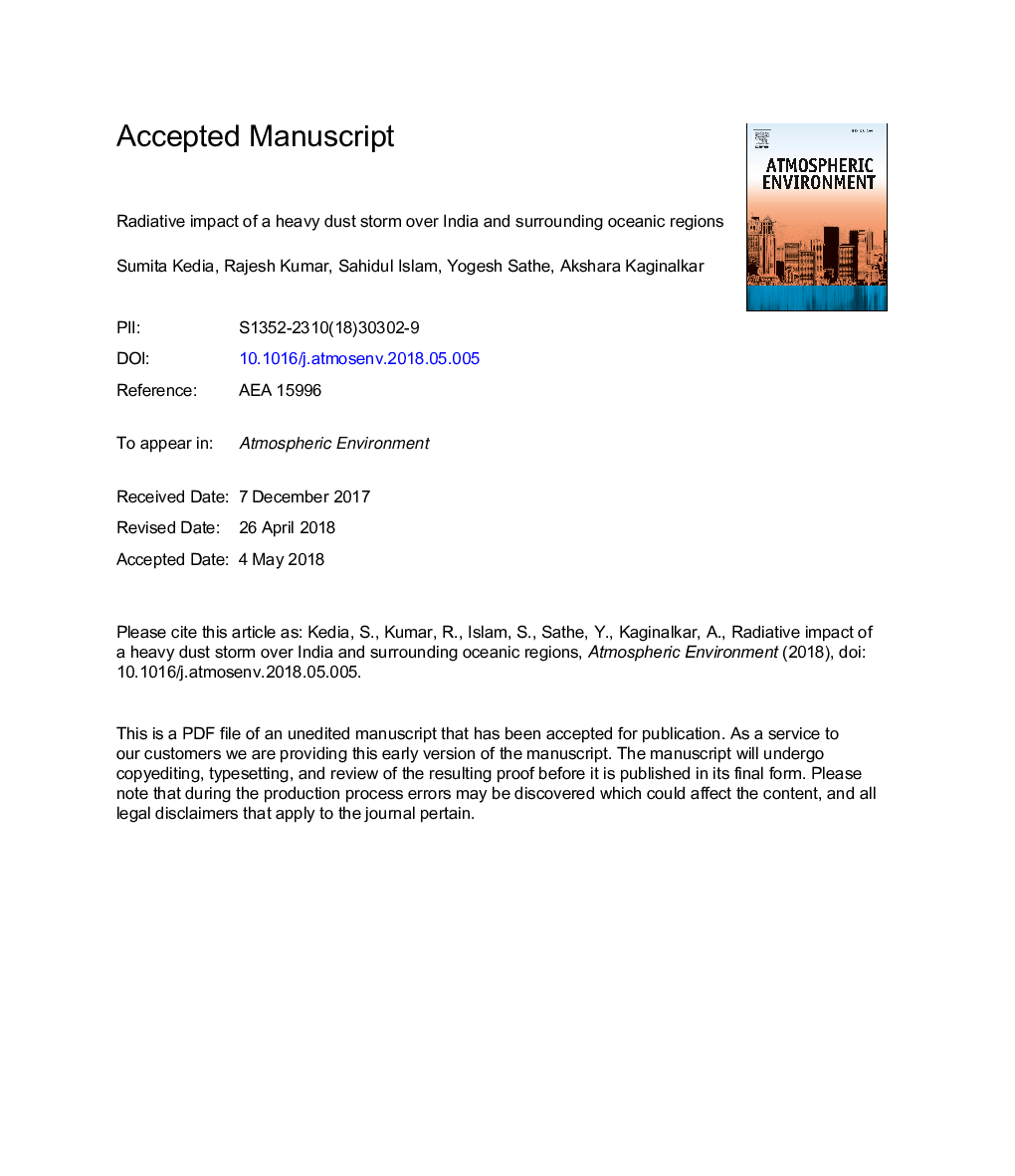| Article ID | Journal | Published Year | Pages | File Type |
|---|---|---|---|---|
| 8863727 | Atmospheric Environment | 2018 | 43 Pages |
Abstract
Model results show significant changes in aerosol optical, physical and radiative properties due to the dominance of coarse mode aerosols in the atmosphere during the dust storm. Analysis of vertical profiles of particulate matter (PM10) concentration reveals the presence of dust aerosols extending from the surface to altitudes as high as 3-4â¯km during the dust storm period. The dust storm induced a cooling effect at the surface via reduction in shortwave (SW) radiative flux. A substantial decrease in temperature is also seen at 850â¯hPa due to dust, indicating a significant impact of dust layer on the atmospheric temperature profile. Atmospheric heating due to dust aerosols in the SW region is found to be compensated up to a large extent by longwave (LW) cooling effect of dust. The net dust induced radiative perturbation at the top of the atmosphere (TOA) over different regions is negative and varied from â2.49 to â0.34 Wm-2, while it is in the range of â0.62 to + 0.32 Wm-2 at the surface.
Keywords
Related Topics
Physical Sciences and Engineering
Earth and Planetary Sciences
Atmospheric Science
Authors
Sumita Kedia, Rajesh Kumar, Sahidul Islam, Yogesh Sathe, Akshara Kaginalkar,
